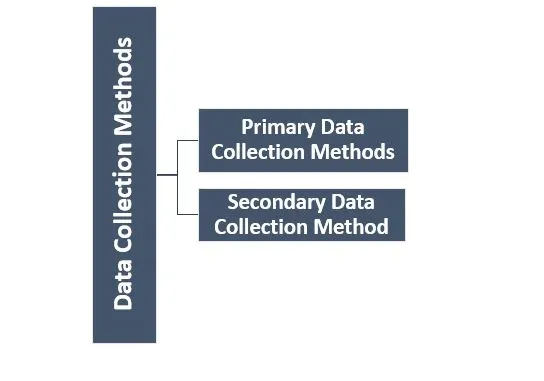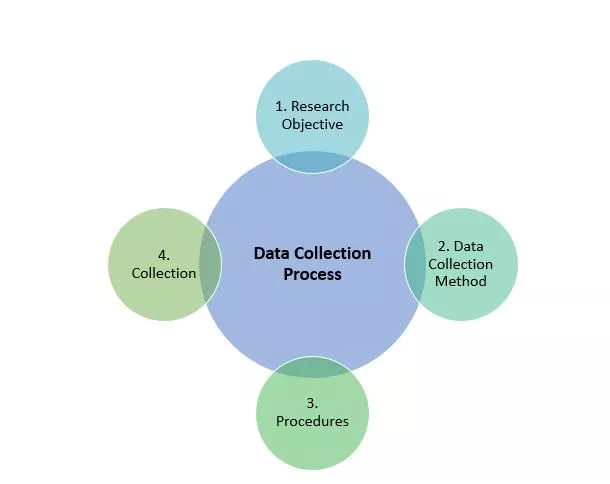Did you know we perform more than 40,000 search queries on Google every second? This means the numbers can go up to 3.5 searches on a daily basis and 1.2 trillion searches annually.
Today it is easy to connect to the world, whether teachers are connecting to their students or businesses connecting with their potential customers and clients. Data can account for how relationships are between different groups and give you the prospect to enhance every aspect of their actions. To precisely put, data is CRUCIAL but collecting the correct data is undoubtedly more than just crucial.
So, before we jump on to unearthing the right ways to collect cumbersome information, let us see what the data collection process is and why it is significant.

What is Data Collection?
Data collecting is the process of gathering, measuring, and analyzing information or data using standard validated techniques. A student or researcher can assess their hypotheses on the basis of the data collected and thus be strategic in their approaches in the future.
Though in most cases, data collection is the most significant step for research, regardless of the field and type of study. However, the cardinal aim of data collection is to ensure that you have the most reliable and rich information for your statistical analysis to make data-driven decisions.
Advantages of Getting Hold of the Right Data
We know getting accurate information can assist you in developing better strategies and strengthen the overall decision-making process. But what else is there? That you will find out in a while.
Here are a few reasons why data collection is essential, what you can do with it, and how it is relatable to almost every field of statistics and outside.
- Allows Finding Solutions
Data can help you determine the cause of your problem initially and then help you with hunting the possible solutions. Researchers can look at data points side-by-side, develop more accurate theories in the future, and certainly put feasible solutions.
- Can Help Get Rid Of The Guessing Game
Hypotheses can never be effective in the long run. You need to prove them. Whether the decisions and strategies have circumstances you had anticipated or not, you can at least be confident that your approach was based on concrete data.
- Keeps Tracks of It All
Accurate and valuable data in research and help you establish benchmarks and follow your goals. Not only this, but it can also help you keep track of where there is room for improvement. As a result, you can fix those errors and celebrate success when achieved.
The list of benefits can go on and on, so let us just stop here and move on to the different methods of getting this precious information.
Having said that, below are some of the most common methods of collecting data for your statistical analysis.
What data collection methods best suits your research?
- Find out by hiring an expert from ResearchProspect today!
- Despite how challenging the subject may be, we are here to help you.
Data Collection Methods in Research
Depending on the type of data and nature of your study, the data collection method can be divided into two main categories:
- Primary Data Collection Methods
- Secondary Data Collection Method
- Primary Data Collection Methods
Primary data, also known as raw data, is information gathered directly from a first-hand source. It is considered the most reliable method as the data is collected after careful observations, surveys, and experiments. It is further classified into two types:
- Quantitative Data Collection
- Qualitative Data Collection
Quantitative Data Collection
As the name rightly explains, it is data collected from mathematical calculations using various formats, such as correlation, and regression, mean, mode, and median, and close-ended questions, to name a few. Usually, this method is much affordable and does not consume much time compared to qualitative data collection methods.
Qualitative Data Collection Methods
Qualitative data collection methods do not involve any kind of mathematical calculations. These include elements that are not quantifiable. Interviews, surveys, questionnaires, and related methods of collecting data fall under this category.
- Secondary Data Collection Methods
The secondary data is all the data gathered by someone other than the researcher or student. This could be studying and making assumptions on already researched information available on the internet or in the form of books and newspapers. It can either be published or unpublished data.
The published data can be available on:
- Statistical Documents
- Government Publications
- Public Records
- Business Documents
The unpublished data consists of:
- Letters
- Diaries
- Unpublished biographies
Ready to begin the data collection process? We thought so!
Below are the 4 steps of collecting data for your research.
Get statistical analysis help at an affordable price
We have:
- An expert statistician will complete your work
- Rigorous quality checks
- Confidentiality and reliability
- Any statistical software of your choice
- Free Plagiarism Report
The Data Collection Process in Research
There are no fixed steps in the data collection process in statistics. It solely depends on the nature of your study and the population you are targeting. However, the overall procedure of data collection methods remains the same.
These are four steps, namely:
- Defining the Research Objective
- Selecting the Data Collection Method
- Planning the Procedures
- Collecting Data
Step 1: Defining Research Objective
You cannot start the data collection process until you are sure why exactly do you need the information and what are you planning to achieve. A simple way to begin working on this would be by coming up with a problem statement. A problem statement is basically a claim outlining the issue addressed by a study.
Now, move on to the next part of this step, which is formulating two or more research questions defining what you want to find out. When done with that, decide whether quantitative data is workable for the study or the contrary.
Step 2: Selecting the Data Collection Method
We earlier discussed in detail different methods of collecting data for the study, go through those and see what best suits your area of research.
- If you feel data can only be gathered through a quantitative method, go with experimentation
- In case of qualitative methods required, conducting interviews and focus group discussions would work
- You can consider surveys and observations if your study requires qualitative and quantitative methods
Step 3: Planning the Procedures
If you are sure of which methods to carry out your research, it is time you begin planning how to plan these procedures. In short, it is implementation o’clock!
Decide on what kind of questions might cover your research if you are conducting interviews or surveys. Similarly, if experimentation is your key forward, work on an experimental design. It might take a little more time than you initially thought of, but ensure to invest what you have in this. Only then would you be able to ample amount of data for future assessments.
In collecting data, it is also significant to decide who is going to collect it. Maybe you might have to collect it manually, but that rarely happens. In this technologically advanced era, everything is made possible with a single click. There are a lot of automated software(s) that can do the job for you. However, it is wise and practical to liaise with a person in charge so that the required data is in the correct format.
By the end of this step, you must know whether to measure the whole population, or a sample would do. If you think it is impractical to measure the data of the entire population, consider a sample instead. If the contrary works for you, start doing that.
Step 4: Collecting Data
The last step of the process is to simply collect all the data, compile it in one place, and start evaluating it to achieve your findings.
Here are a few tricks and tips for you to gather data accurately and efficiently:
Tip 1: Have you made sure all the relevant information is safe and secured? If not, do it now!
Tip 2: Get the manual data entry checked by someone else so that errors could be pointed out
Frequently Asked Questions
Data collection allows you to have reliable and valuable information that further helps you in making data-driven and strategically crucial decisions.
Quantitative data collection methods include statistics, while qualitative data collection methods are non-statistical ways of collecting information.
It is the data researcher finds from other researchers or secondary sources. For instance, if research only relies on information already out there in books, on the internet, research papers, and newspapers, it is the secondary data collection method.
A problem statement is a collection of words and sentences that explain the problem your study or research will address. The aim is to find solutions to this problem in research.




















